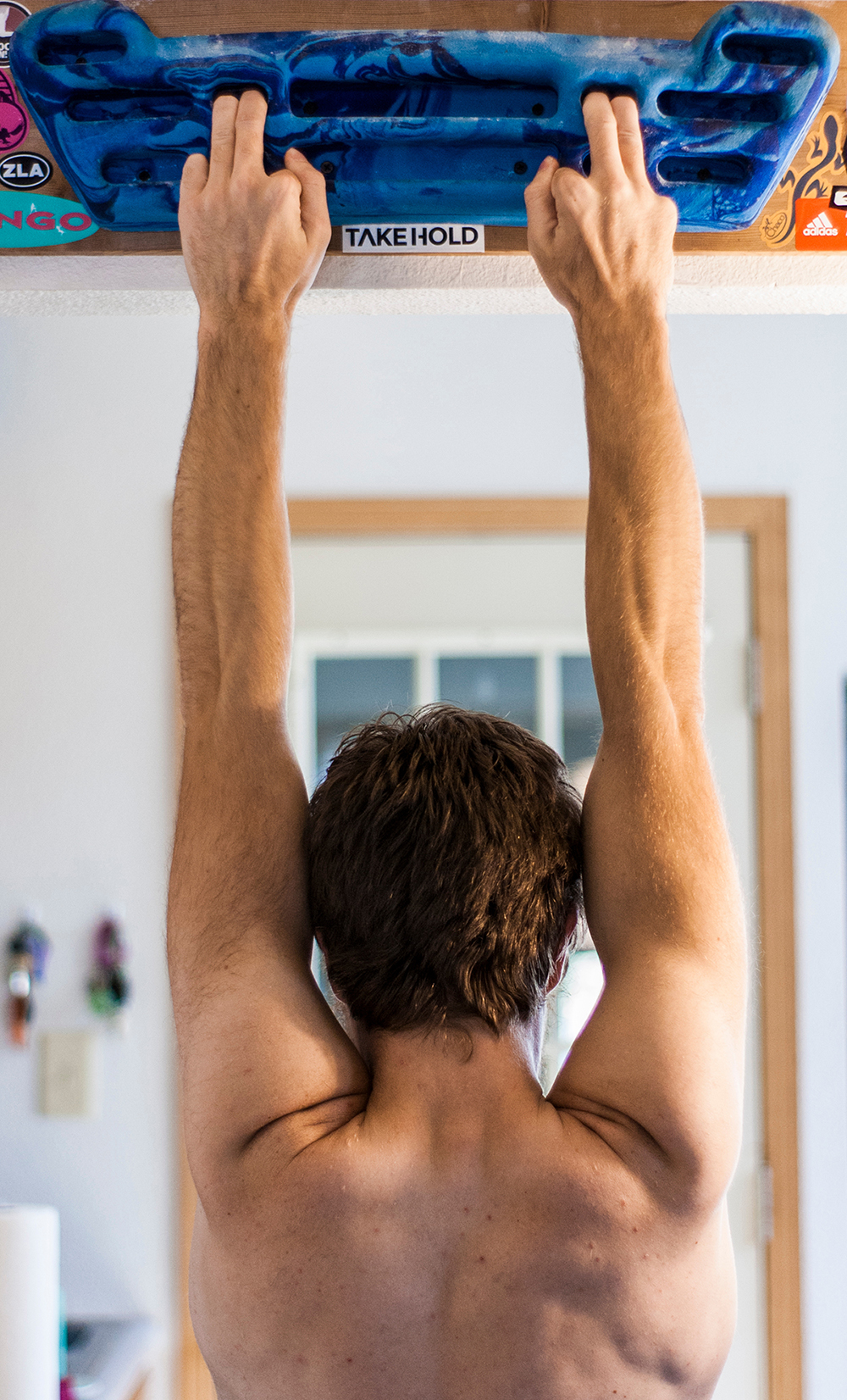
Head into almost any commercial climbing gym, and you will find a hangboard available for climbers to train. If you’re new to climbing and have never used a hangboard before, it can be intimidating to get started. While hangboarding is one of the most effective ways to build finger strength for climbing, it’s essential to do so knowledgeably and with confidence so that you can develop resilient fingers while avoiding injuries or overuse. Here’s everything you need to know before adding hangboarding to your routine.
What Is Hangboarding?

A hangboard is a training tool designed to improve finger strength by providing various depths and edges of downward force holds, allowing you to utilize your hanging weight to load your fingers in an open crimp form. While various hangboards have different hold offerings, the traditional hangboard will consist of two-handed horizontal edges at varying depths, usually between 6 and 30 millimeters, to help you tackle those crimpy, challenging climbs.
Warm-up is Essential
Before any hangboard session, it’s critical to warm up your fingers, forearms, and shoulders to avoid injuries. You can begin by doing some easy climbing or jug hangs to activate blood flow to your fingers, tendons, and connective tissues. Finger flicks, rolling your fingers from high-fives to fists, and lightly stretching your forearms are also good ways to prepare for hangboarding. Ultimately, the best warm-up is a personalized one that you discover through trying multiple exercises and picking what feels best for you. Rushing your warm-up or skipping it entirely dramatically increases your risk of injury.
Know Before You Hang
Despite its effectiveness at developing finger strength and resilience, hangboarding is often a double-edged sword. Training incorrectly or too intensely can lead to injuries that might sideline you for weeks or even months. Before adding a hangboard regimen to your workouts, it’s essential to know the common beginner mistakes to avoid.
1. Overloading the Fingers Too Quickly:
Jumping straight into small edges or intense protocols can lead to pulled muscles and tendonitis. Start with deeper edges and lighten the hanging load, either by using bands or by allowing your feet to take weight if the board is close to a kickboard or the ground. Progress gradually, and pay attention to your body to see if it’s asking for a slower, longer build-up to maximum load.
2. Poor Form:
Allowing your shoulders to shrug to your ears or your elbows to lock while hanging can strain joints and tendons. Always keep a slight engagement and bend in your elbows through your forearms, and engage your shoulders by activating your scapulas. If you find it difficult to “turn on” your scapulas, consider warming up with scapular shrugs and pullups.
3. Overtraining:
Beginners often make the mistake of hangboarding too frequently. Much like rich desserts, hangboarding can quickly turn into too much of a good thing. Start with one session per week and gradually increase to two as your tendons and connective tissues adapt to the load.
4. Going to Failure:
While you want to develop the ability to have grit and tenacity on the wall, the hangboard in general should not be used for any reps that go to failure. If you find that your hangboard exercise is pushing you to the point of falling or dry-firing off the hangboard, consider adjusting your load or time on the board.
Injuries to Avoid
Again, before beginning your hangboarding journey, you should be aware of the potential injuries that can arise, possibly due to the beginner mistakes discussed above, but also just part of being a climber:
1. Pulley Injuries (A2 and A4):
Your pulleys run along the palm side of your fingers and do exactly what their namesake suggests – allow you to pull. Injuring a pulley typically occurs when using a full crimp grip on small edges. You may feel a sudden “pop” in the meat of your finger, followed by swelling and pain. You should never train a full crimp on a hangboard.
2. Tendonitis:
Tendonitis can occur in the fingers, palms, and elbows. Inflammation of the flexor tendons from overuse can cause pain and stiffness at the base of the fingers or the palm, as well as in the elbow. Recovering from tendonitis can be tedious and require a significant amount of downtime.
3. Shoulder Impingement:
Hanging without engaging your shoulder blades can compress the rotator cuff tendons, leading to pain and inflammation. Impingement can present as a lack of mobility and stickiness in the shoulder.
4. Golfer’s Elbow (Medial Epicondylitis):
Overuse of the forearm flexors can result in pain on the inside of the elbow. Improper hanging technique and locking out elbows often contribute to this issue. Adding load to your hangboarding session too quickly, rather than gradually increasing it over time, can also contribute to this nagging condition.
Listen to Your Body: If you feel any sharp or lingering pain, stop immediately. Continuing to train through pain is a fast track to chronic injuries.
For beginners, it’s crucial to incorporate hangboarding gradually into your training routine. Consider alternating hangboard days with technique and power endurance sessions to manage your volume and intensity. Hangboarding is a valuable tool for climbers seeking to develop finger strength, but it’s crucial to approach it with caution and respect for your body’s limits. Start slow, focus on proper form, and prioritize injury prevention. With consistent, careful training, you’ll see improvements in grip strength that translate directly to your climbing performance.
Are you considering adding hangboarding to your climbing sessions? Let us know in the comments below!

